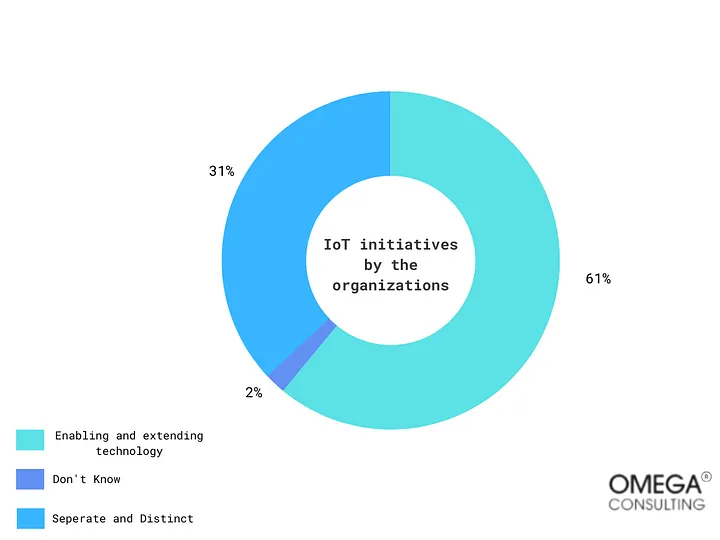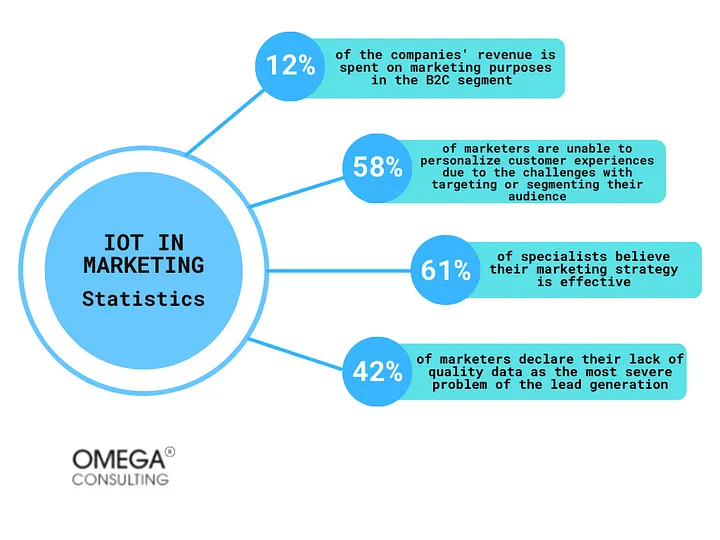- Industries
Industries
- Functions
Functions
- Insights
Insights
- Careers
Careers
- About Us
- Marketing & Advertising
- By Omega Team

Introduction
In our interconnected world, the Internet of Things (IoT) has become a game-changing force, revolutionizing industries across the globe. From smart homes to intelligent cities, IoT has brought unparalleled connectivity and automation to our daily lives. However, its impact goes beyond mere convenience. The fusion of IoT with the innovative field of quantum marketing is poised to redefine how businesses interact with consumers.Quantum marketing, an advanced approach that combines quantum physics principles with marketing strategies, aims to gain a deeper understanding of consumer behavior and preferences. By integrating IoT within this framework, a new dimension opens up, empowering marketers to gather real-time data from interconnected devices and utilize it to craft personalized experiences for consumers.
IoT in Marketing
The Internet of Things connects numerous physical objects or devices to the Internet. The devices are embedded with data-exchanging software and sensors. The Internet of Things is used by marketers to identify various patterns in order to provide seamless consumer interactions. It helps them predict the preferences and lifestyles of their customers.For instance, you bring a smart coffee machine to satisfy your morning cravings for freshly brewed coffee. One day, you run out of coffee, and your coffee machine notifies the e-commerce website that consumer ‘XYZ’ has run out of coffee. Coffee sale alerts will be sent to your phone from a retailer. That is how IoT functions in the real world: to make life simpler and solution acquisition quicker. As a consequence of IoT, the marketing landscape has undergone profound transformations. It has made life simpler for people. Marketers are making endeavors to incorporate IoT into their strategies and anticipate that the technology will rapidly overtake marketing trends.
Impact of IoT on Marketing
Real-Time TransactionsCustomers expect brands to respond instantly to their inquiries. What are the implications for the brands? It implies that brands must be vigilant when providing innovative solutions to their consumers. They must provide assistance in a timely manner, which is possible with the aid of the Internet of Things.
For example, if your smart refrigerator is out of eggs for scrambled eggs for breakfast. The refrigerator’s sensors will detect the presence of eggs and suggest adjacent stores where they can be purchased. It will display customized options based on your preferences. This is an instance of an immediate response.
Hotel registration is another example of a real-time Internet of Things transaction. Hotels offer a quicker check-in procedure, allowing guests to utilize IoT on their devices to check in and receive the keys. In the future, consumers will be able to receive personalized check-in experiences.
For instance, the number of beds, type of pillows, and food preferences of guests.
Geofencing
In light of the significance of smartphones, businesses are utilizing IoT to maximize their use. Geofencing is a location intelligence technique that utilizes the GPS functionality of a user’s smart device to provide recommendations. This method is utilized by businesses to provide pertinent, personalized recommendations near your location.
IoT informs businesses about buyers’ locations and facilitates the transmission of product recommendations, promotions, and discounts. It induces customers to visit the store and make purchases.
Personalization
Businesses are attempting to distinguish themselves from the competition by offering personalized experiences. As the demand for customization has increased, businesses are employing various strategies to remain competitive. Companies utilize IoT to satisfy customer demands.
With the assistance of the Internet of Things, businesses and customers are more connected. Utilizing a variety of fitness trackers, coffee makers, and cab-booking services, marketers collect valuable data to enhance the consumer experience.
Market opportunities
The integration of IoT in quantum marketing presents a wide array of market opportunities for businesses seeking to revolutionize their consumer engagement strategies.The ability to gather real-time data from interconnected IoT devices opens up avenues for personalized marketing at an unprecedented scale. This wealth of information enables them to develop highly targeted and contextually relevant campaigns that resonate deeply with individual consumers. By leveraging IoT, marketers can create customized experiences that cater to specific needs and preferences, enhancing customer satisfaction and driving brand loyalty. The amalgamation of IoT devices in quantum marketing facilitates seamless omni-channel experiences with IoT acting as a bridge between physical and digital touchpoints, marketers can create cohesive and consistent brand experiences across multiple channels. This allows for personalized interactions and tailored messaging that aligns with the consumer’s journey, regardless of the platform or device they are using.
Exhibit 1
IoT Initiatives Description by OrganizationOf all the organizations 61% describe them as enabling and extending technology, 37% describe them as separate and distinct, and 2% describe them as don’t know.

Exhibit 2
IoT in MarketingKey Statistics related to IoT in marketing are shown as follows:

Examples of Using IOT in Marketing
The Internet of Things (IoT) has revolutionized various industries, including marketing. By leveraging IoT technologies, marketers can gather valuable data, improve customer experiences, and deliver personalized campaigns. Here are some examples of how IoT is used in marketing:Smart Retail
IoT devices like beacons, RFID tags, and sensors can be used to track customer behavior within retail stores. Marketers can analyze this data to understand foot traffic patterns, and customer preferences, and optimize store layouts for better product placement. They can also send personalized offers and recommendations to customers’ smartphones based on their location within the store.
Connected Products
IoT-enabled products provide marketers with real-time insights into product usage and customer behavior. For instance, a smart appliance can collect data on usage patterns, which marketers can use to develop personalized marketing campaigns, offer maintenance reminders, and cross-sell related products or services.
Location-based Marketing
IoT technology, such as GPS and geofencing, allows marketers to deliver targeted messages and promotions based on the user’s physical location. For example, a coffee shop can send a coupon to a customer’s smartphone when they are in close proximity to their store, enticing them to make a purchase.
Interactive Displays
IoT-enabled displays, such as digital signage or interactive kiosks, can provide personalized content based on customer demographics, preferences, or past behavior. Marketers can deliver tailored advertisements, promotions, and recommendations to engage customers in real time.
Customer Experience Enhancement
IoT technology allows marketers to create immersive and interactive experiences for customers.
For instance, at events or retail locations, marketers can deploy IoT-powered installations that use sensors and displays to engage visitors with personalized content, gamification, or augmented reality experiences.
Future Outlook
The future outlook for IoT in quantum marketing is filled with immense potential and exciting possibilities. As technology continues to advance and the adoption of IoT devices expands, the integration of IoT in quantum marketing is poised to become even more influential and transformative.According to IoT Analytics predictions, the number of IoT devices is expected to rise by 18% and reach 14.4 billion by 2023. Moreover, this number has the potential to soar to an astounding 27 billion interconnected IoT devices by 2025. This exponential growth signifies a significant evolution in the industry, presenting abundant opportunities for innovative businesses to harness the advantages offered by IoT.
By 2023, it is estimated that the quantity of internet-connected devices will exceed 43 billion, enabling a wide range of data-related activities, including data generation, analysis, and utilization.
Conclusion
The number of smart, connected devices is growing exponentially. And as various quantum technologies acquire more and more data, it will become increasingly crucial to utilize this data.Consumers anticipate that businesses will recognize their specific requirements and meet them. With the Internet of Things, brands are in a better position to identify these requirements, research them, and initiate integrated marketing campaigns to address them. Despite the fact that IoT can make advertising more intrusive, it is essential for marketers to use it to create personalization that serves the best interests of consumers.
Subscribe
Select topics and stay current with our latest insights
- Functions